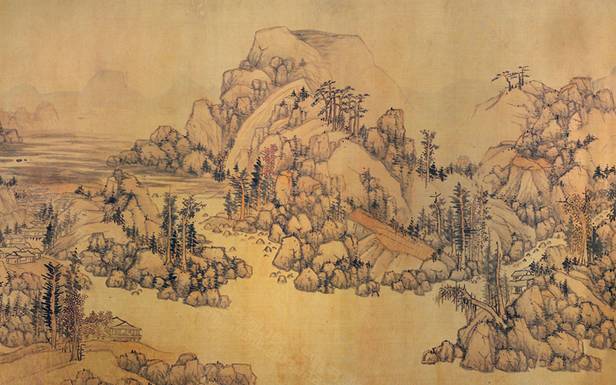
Qianjiang ceramics painting refers to a type of overglaze enamel ware that gained popularity during the Late Qing and Early Republican periods. The term Qianjiang cai (浅绛彩), meaning “light ochre enamels,” was coined only in the 1950s. Prior to this, Late Qing and Republican-era records did not classify it as a distinct overglaze enamel technique.
Originally, Qianjiang referred to a style of landscape painting by Yuan dynasty master Huang Gongwang (黄公望). His work featured a restrained color palette, using varying ink tones for outlines and shading, with reddish-brown highlights for foliage, water, and illuminated areas of mountains.
Later, the term was adopted for porcelain painting across multiple subjects—landscapes, figures, and birds/flowers—incorporating a similar color scheme with additional shades such as aquamarine, moss green, pale blue, red, and light pink.
 |
| Painting by Yuan Landscape painting master Huang Gong Wang |
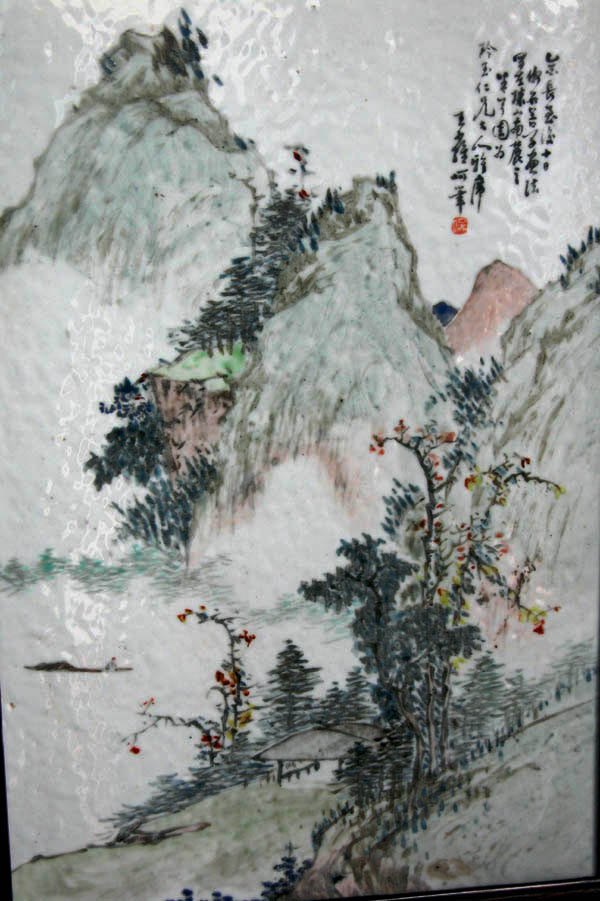 |
|
Landscape by Qianjiang painting Pioneer Wang Shao Wei |
Qianjiang painting and fencai (粉彩) both use the same enamel materials, but their artistic inspirations differ:
A key stylistic distinction lies in the use of black pigment:
This technique has roots in early Qing mocai (墨彩, ink color) painting, known in the West as grisaille ceramic painting.
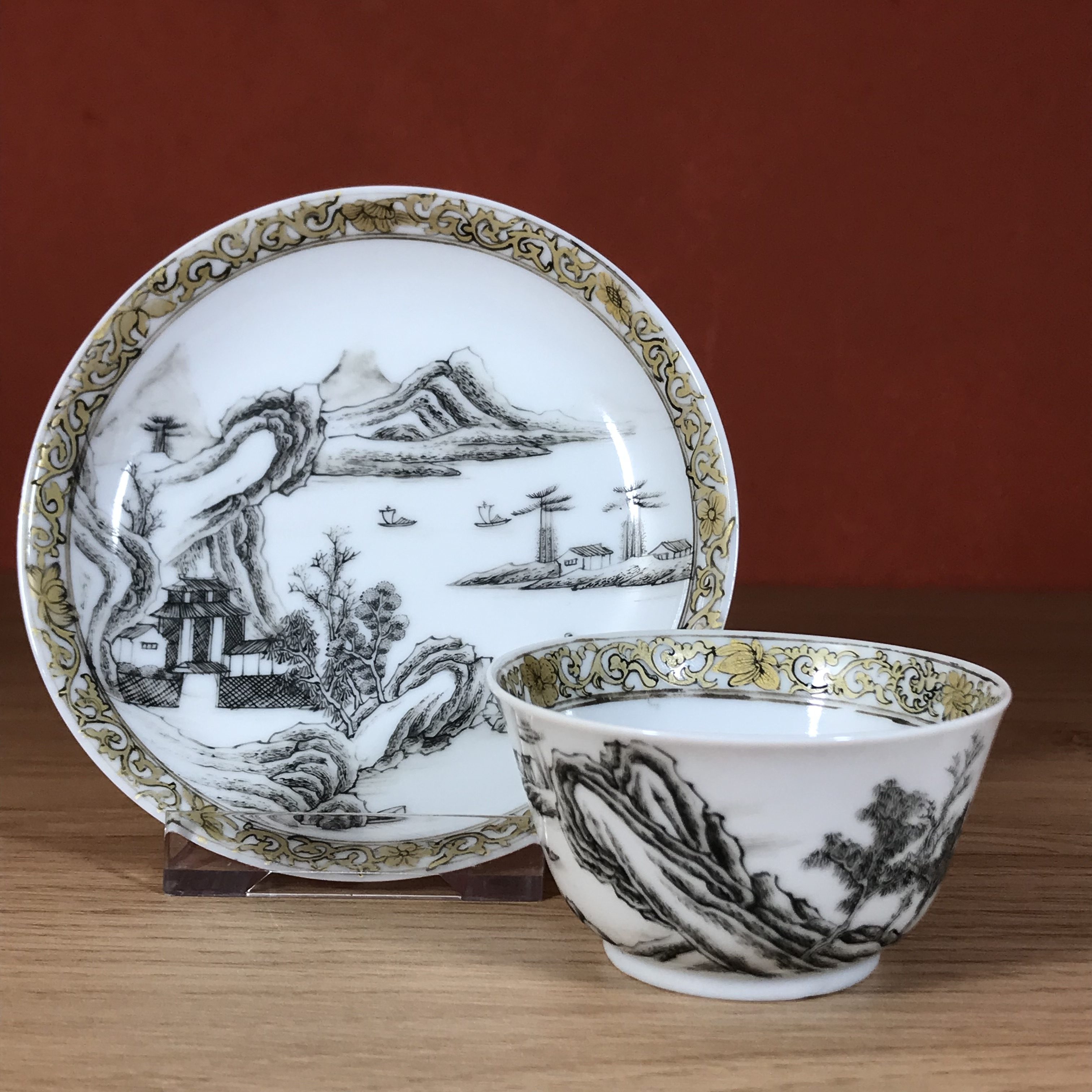 |
|
| 18th Cent. Chinese mocai landscape painting on cup/saucer. Strictly speaking, the source of inspiration for the painting is from literati painting. In term of brush skill, it is however amateurish . |
Qianjiang porcelain represents a significant artistic shift: the direct transference of literati ink painting onto ceramics. Unlike traditional fencai and wucai (五彩) porcelains, which were produced through a division of labor, Qianjiang works are the creative expressions of individual artists. These pieces often include poetic inscriptions and seal marks, reinforcing their connection to literati culture.
An ink-painted porcelain piece by Hu Kui (胡夔), dated Dingmao (丁卯, 1864), has sparked discussions on whether literati painting was first experimented with using mocai before evolving into Qianjiang. Compared to earlier mocai pieces, Hu Kui’s work is highly accomplished—unsurprising, given his reputation as a skilled ink painter.
Some Qianjiang examples even feature both mocai and a fuller range of enamels on the same vessel, highlighting the transitional nature of the art form.
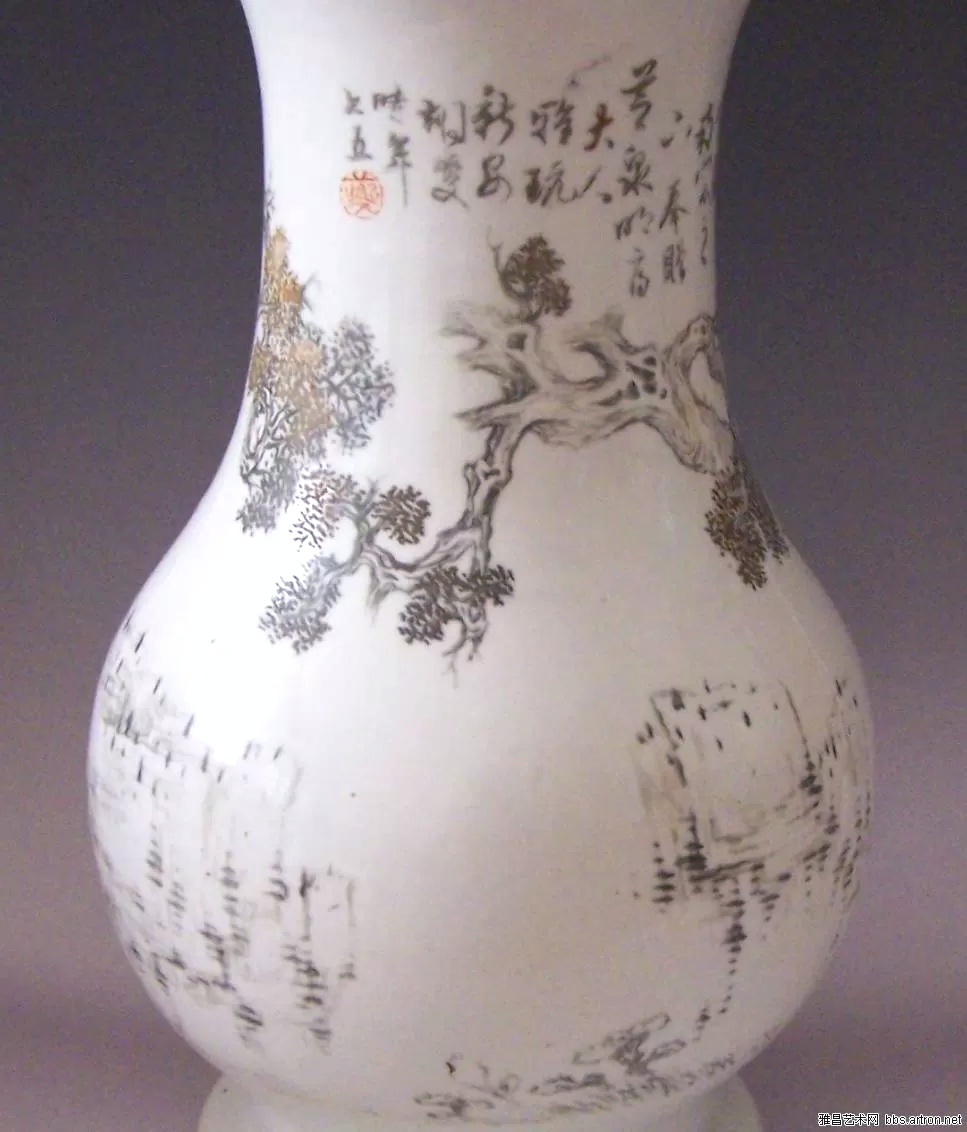 |
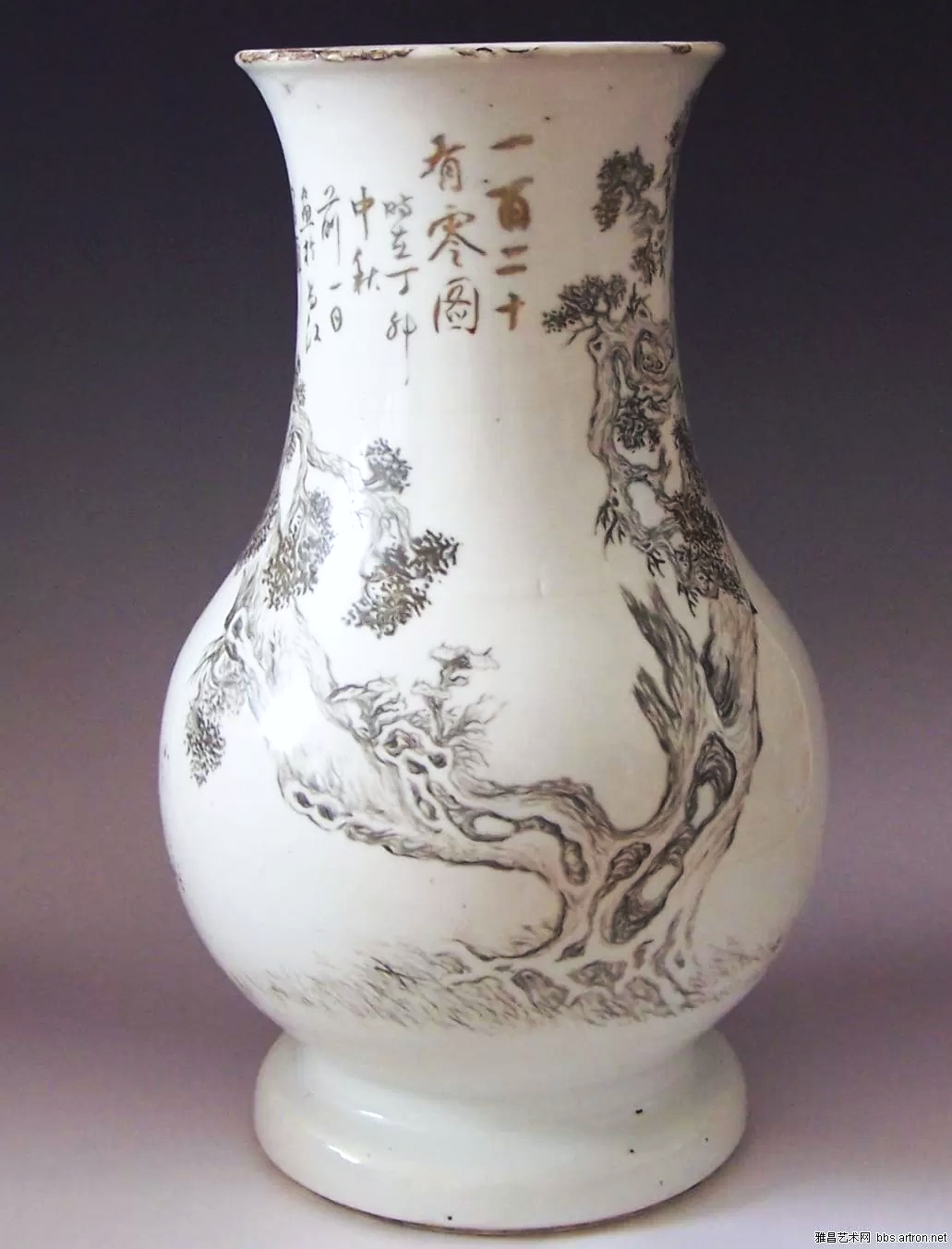 |
| Mocai painting by Hu Kui (胡夔) | |
 |
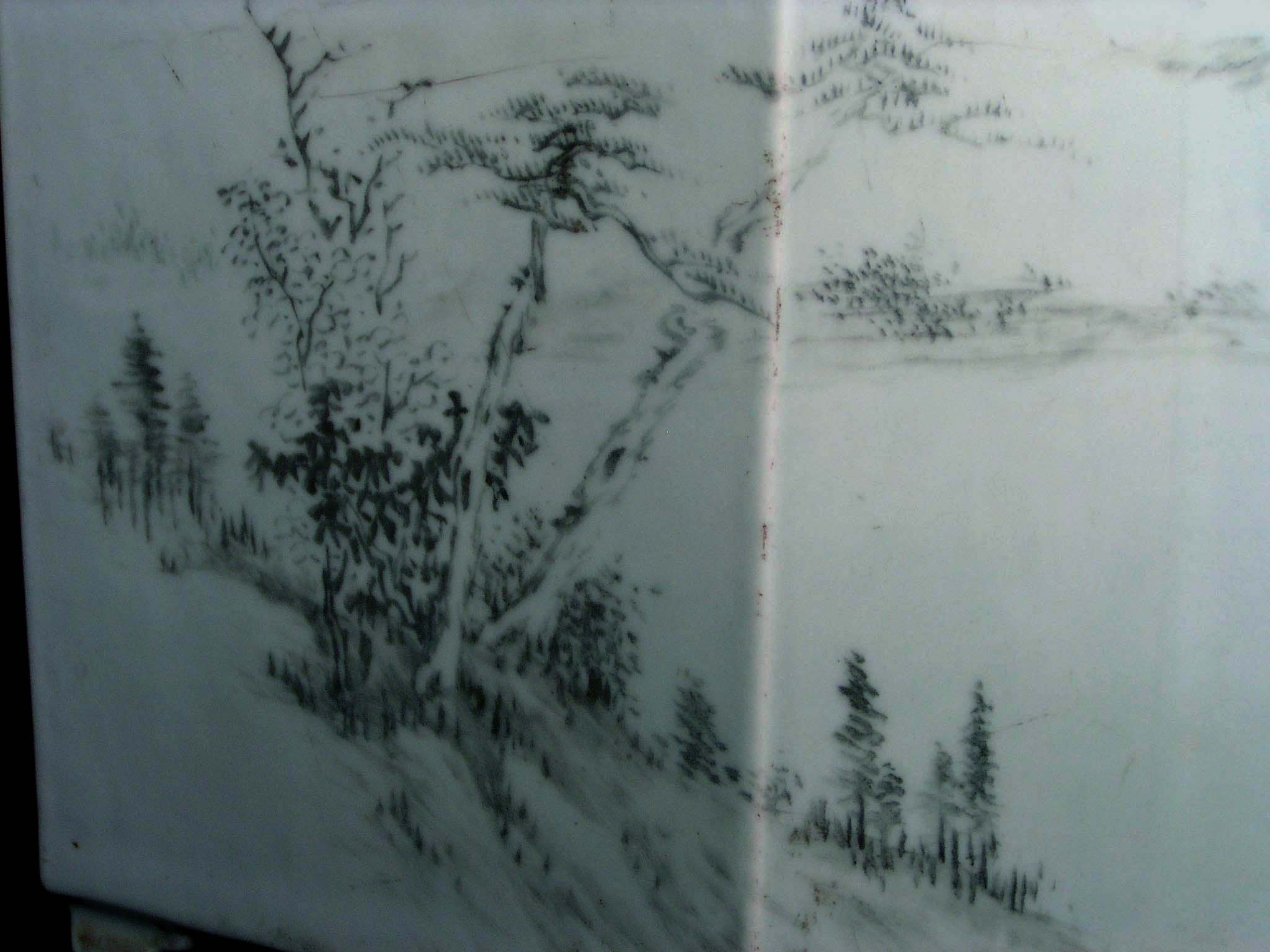 |
| An example with one side of the pot decorated with fuller range of qianjiang enamels and the other side solely with mocai |
With increased research, perceptions of Qianjiang artists have evolved. Their work is now seen as an art form rather than mere craftsmanship.
However, the term Qianjiang—originally referencing Huang Gongwang’s landscape style—does not fully capture the diversity of Qianjiang porcelain painting. Ceramic expert Geng Baochang (耿宝昌) suggested the term shuimo wucai (水墨五彩), meaning “ink-color polychrome,” as a more fitting classification. The emphasis on ink (shuimo) embodies the essence of literati painting.
The earliest known Qianjiang porcelain was once thought to be a teapot from 1855 (5th year of Xianfeng), painted by Cheng Men (程门) and his son Cheng Rong (程荣). However, researcher Xiong Zhongrong (熊忠荣) argues in Qianyitang Cangci (谦益堂藏瓷) that the teapot should be dated 1879 due to a misreading of the cyclical date.
Additionally, in 1855, Cheng Men was only 21 years old, making it unlikely that his son was old enough to paint such an accomplished work. This period also coincided with the Taiping Rebellion, which devastated Jingdezhen’s porcelain industry for seven years, further supporting the 1879 dating.
The widely acknowledged pioneers of Qianjiang painting include:
These artists successfully adapted fencai enamel to simulate the effect of ink painting on ceramics. Jin and Wang even worked at the imperial kilns during the Tongzhi (同治) and Guangxu (光绪) reigns.
 |
|
Landscape by Cheng Men
Landscape by Jin Pin Qing
|
Initially, Qianjiang porcelain was produced by a small circle of highly skilled literati artists for elite patrons. Early works (before 1885) were characterized by a soft, subdued color palette—powdery blacks, browns, blues, and greens, with minimal pink.
From 1885 to 1911, Qianjiang production expanded, fueled by economic recovery and rising demand from affluent merchants. The color scheme grew bolder, influenced by Haipai (海派, Shanghai school) artists such as Ren Yi (任颐) and Wu Changshuo (吴昌硕). This period saw increasingly vibrant depictions, especially in bird-and-flower motifs.
 |
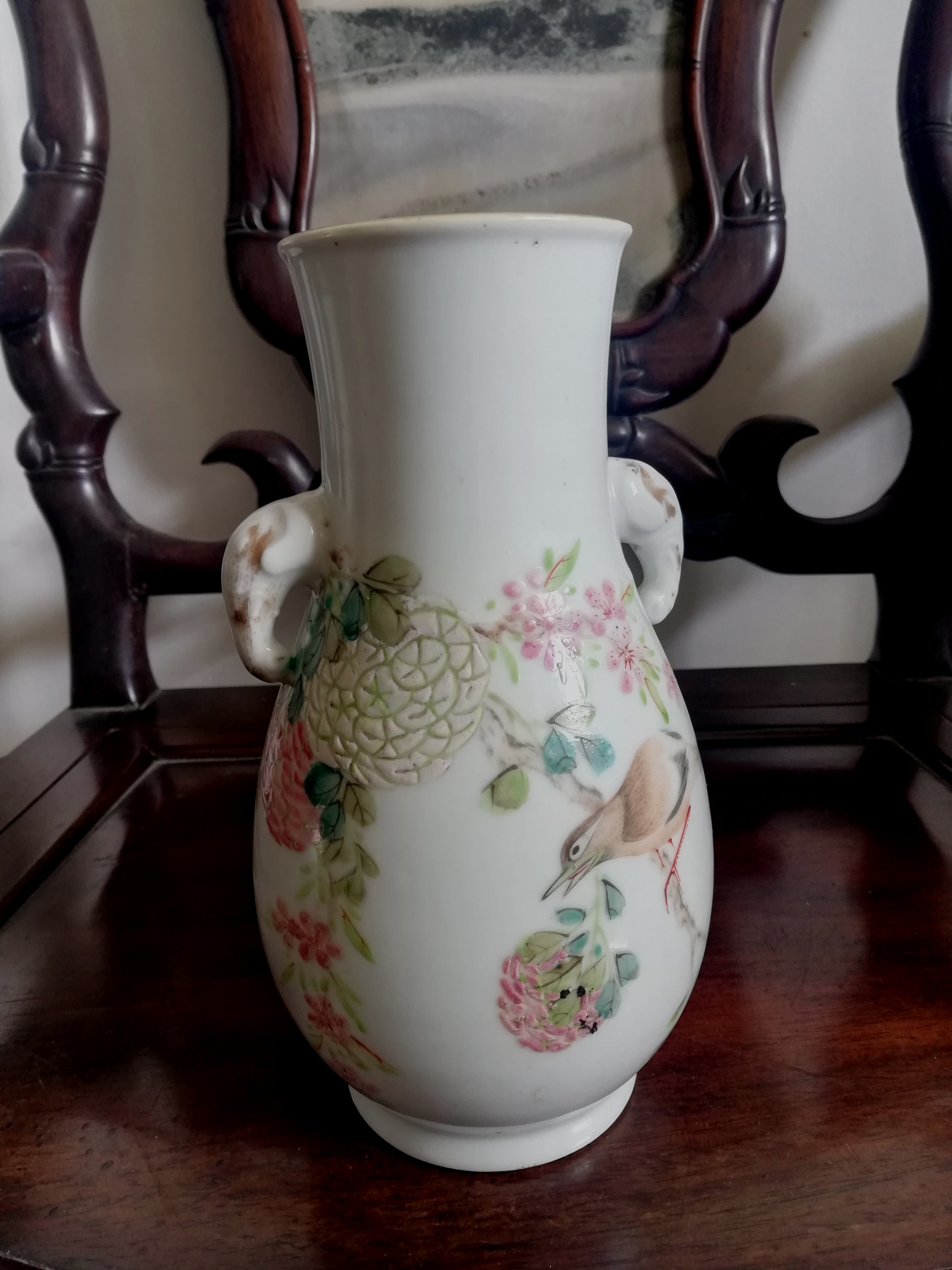 |
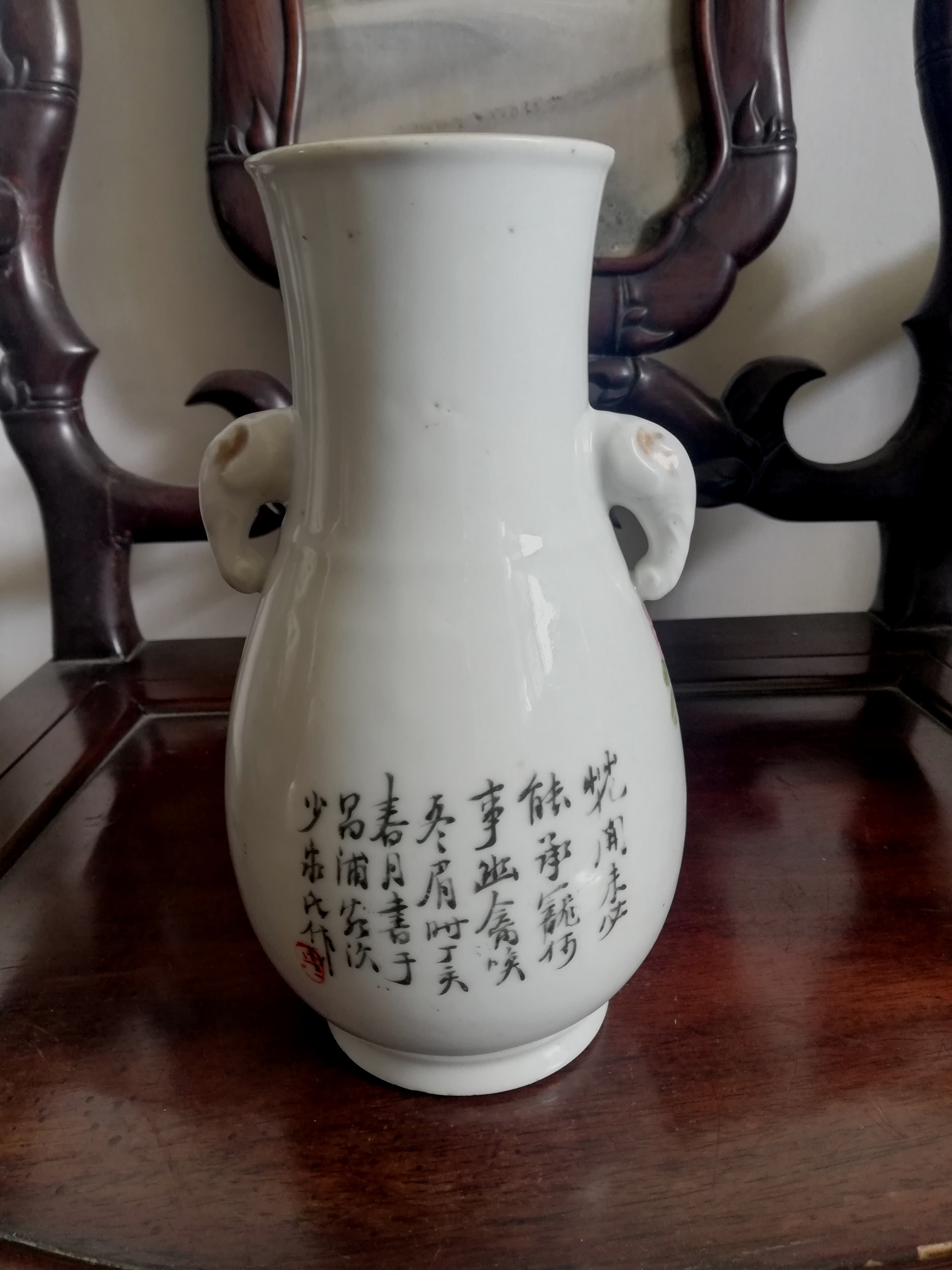 |
|
|
|
||
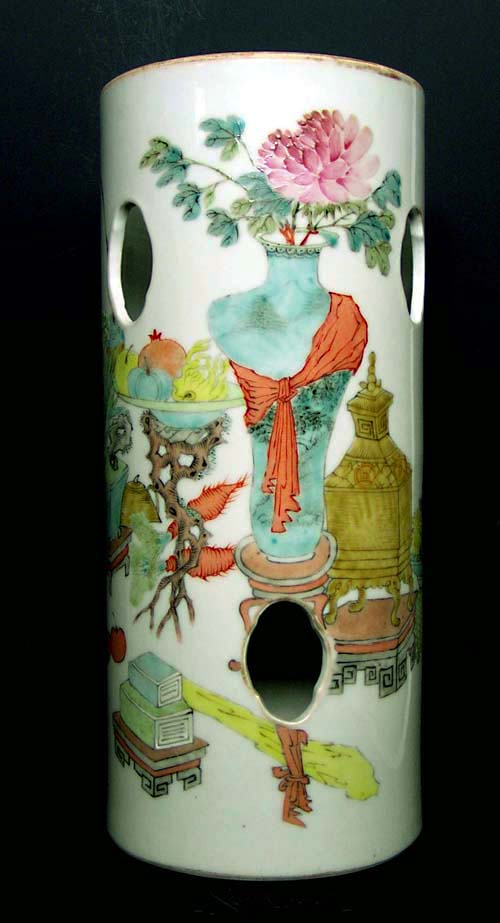 |
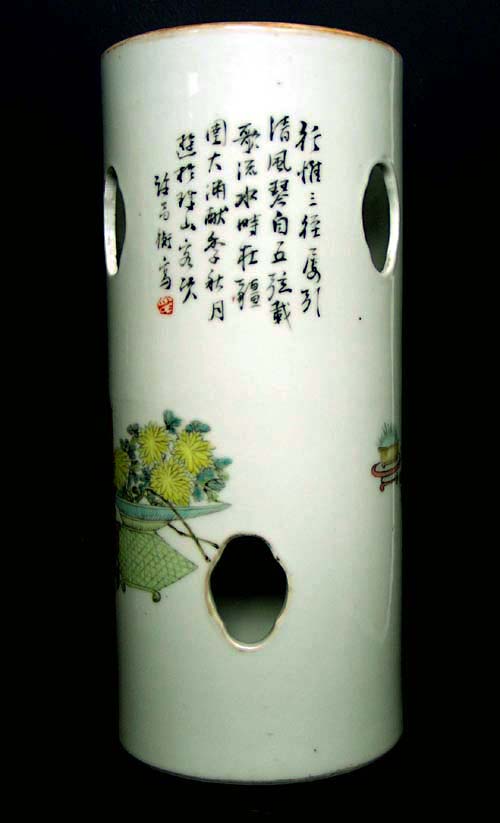 |
| Qianjiang painting of Objects of Antiquity by Xu Pin Heng (许品衡) | |
A distinctive feature of some Qianjiang works is the incorporation of jinwen—ancient Shang/Zhou bronze inscriptions. This reflects the Qing literati’s passion for antiquarianism, a scholarly pursuit dating back to the Song dynasty.
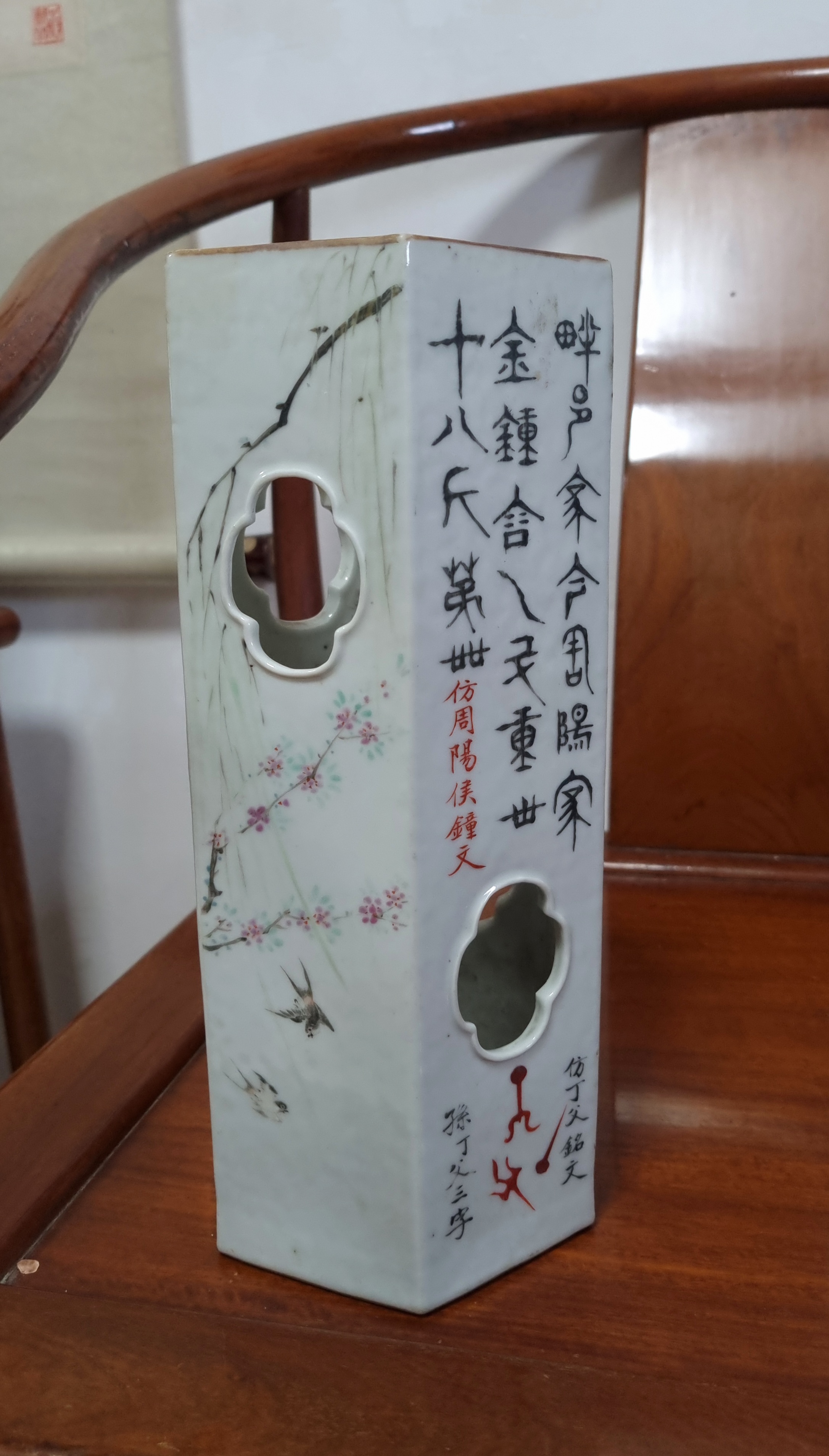 |
||
| Guangxu hatholder with Jiwen as a deocrative element. |
Qianjiang pioneers Jin Pinqing and Wang Shaowei were known as the “Two Brushes of the Imperial Factory.” Some Qianjiang pieces bear marks such as Guan Yao Nei Zao (官窑内造, "Made within the Imperial Kiln"), suggesting a marketing strategy to distinguish high-quality works.
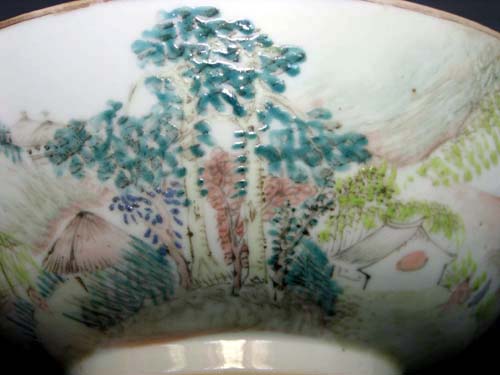 |
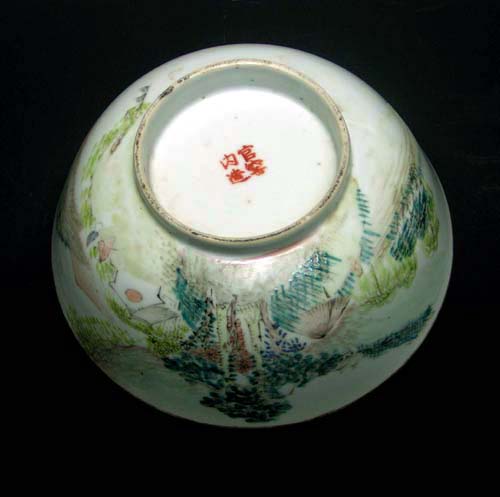 |
After 1911, some artists experimented with yangcai (洋彩, “foreign colors”)—imported synthetic enamels that allowed for water-color-like application. Initially popular for their brightness, yangcai proved less effective than fencai for ink-painting effects, leading to a decline in its use.
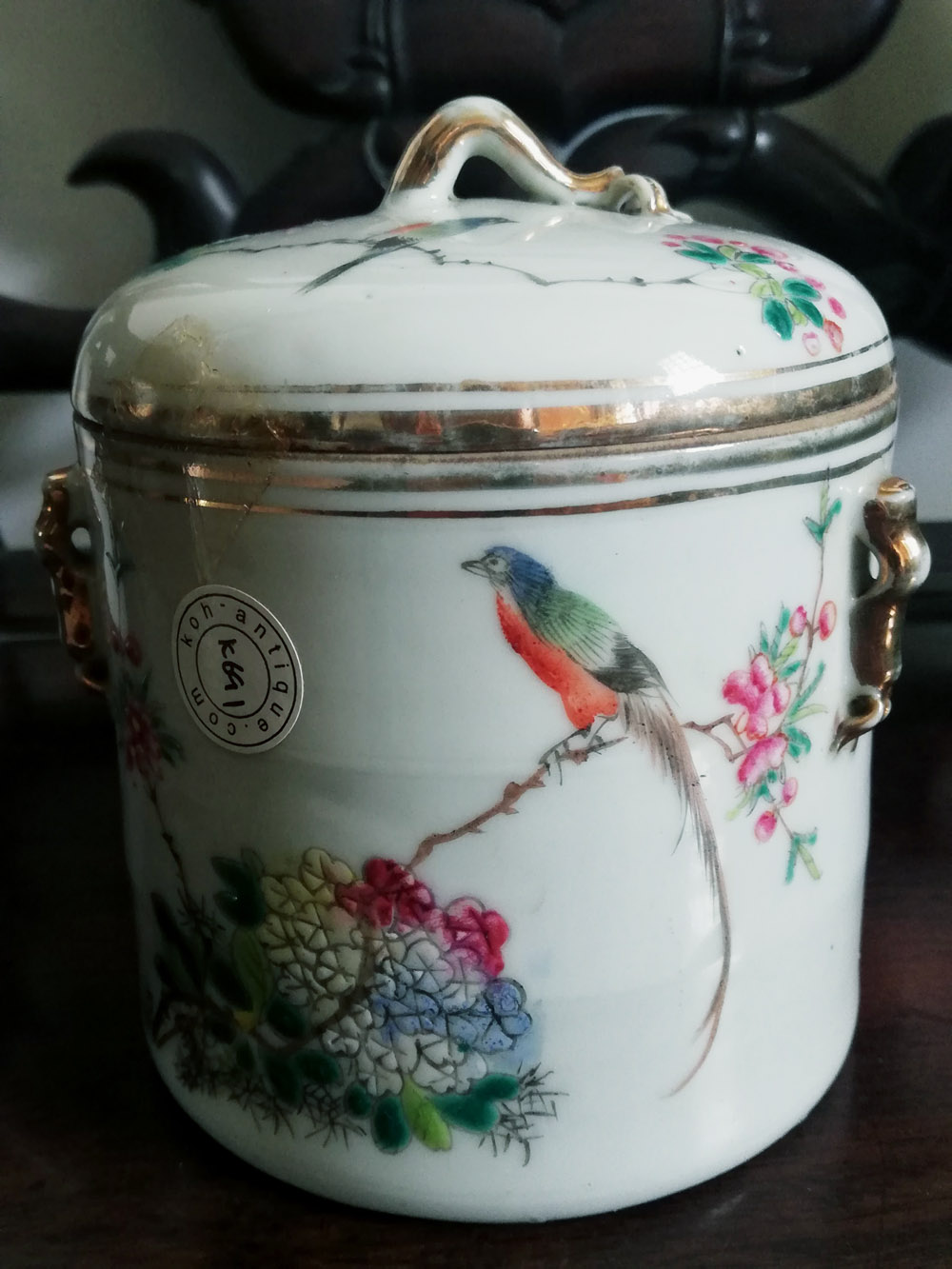 |
| An example with the flower and leaves painted using fencai and bird using Yangcai |
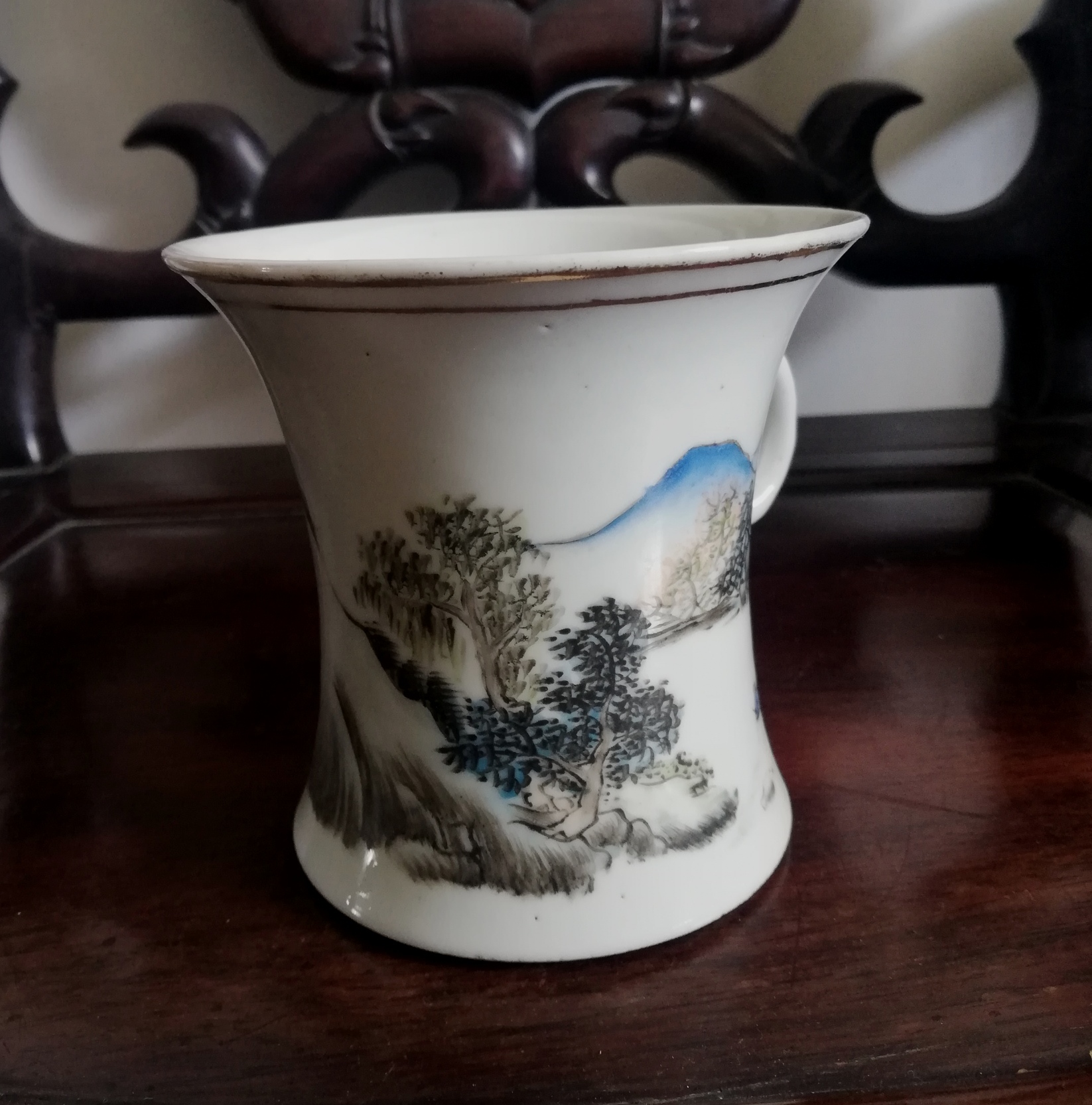 |
| Landscape using Yangcai by famous Qianjiang artist Wang You Tang. Technically the brush strokes are still good but the visual effect is less attractive compared with below work by him executed using Qianjiang fencai based enamels. |
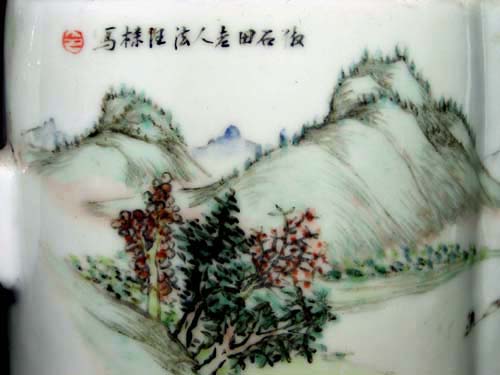 |
| Qianjiang by Wang You Tang using fencai based enamels. |
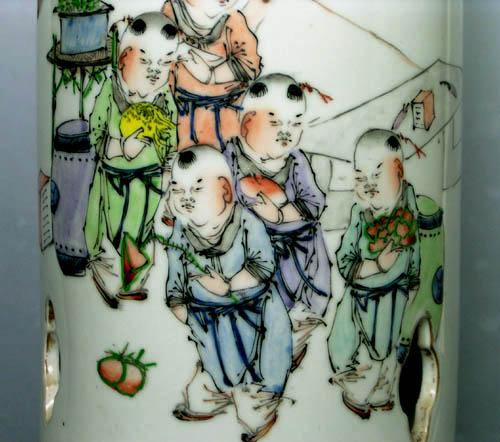 |
|
An example with human subject using Yangcai |
Recognizing yangcai's limitations, Jingdezhen artists refined new fencai (新粉彩), an improved enamel technique allowing for richer shading and more expressive brushwork.
Pioneers of this revival included:
Both died young, and their works are rare. Their students—such as Wang Yeting (汪野亭), Liu Yucen (刘雨岑), and Cheng Yiting (程意亭)—became leading members of the Eight Friends of Zhushan (珠山八友), the top ceramic artists of the Republican period.
Floral and birds by Pan Taoyu
For more on their legacy, visit:
http://koh-antique.com/
Written by: NK Koh
(Updated: 23 Feb 2017, latest update: 6 Mar 2020), updated: 27 Feb 2025.